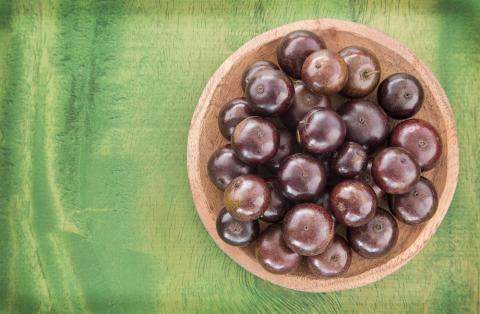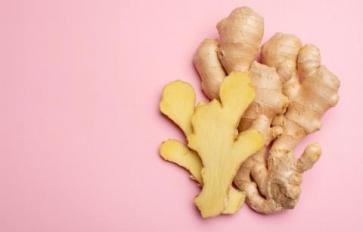
Jaboticaba is a member of the family yrtaceae or Myrtle family of the genus Myrciaria Berg, also known as guava berry, containing the species Myrciaria cauliflora (Mart.) O. Berg or jaboticaba. The plant is native to Brazil and is also known as the Brazilian grape tree. For millennia the native peoples used jaboticaba as a snack and for making wine. Its nutritional value has made this fruit a valuable tool in their healing arsenal.
Other species of jaboticaba have been found in Bolivia, Peru, Uruguay, regions of Argentina, and Paraguay. In 1904, the tree was introduced in Southern California and can be found today throughout the state. The fruit is very perishable and does not ship well so it is not readily available outside of its growing region. In Brazil it is a popular fruit eaten fresh and juiced. Today street vendors sell the fruit and juice when in season and the peelings stain the streets purple.
What does jaboticaba (or Brazilian grapetree) look like?
The jaboticaba tree is an evergreen that is slow growing and, depending on the species, will mature as low as four-and-one-half feet to as tall as forty feet. The plant produces many branches that begin close to the ground, making a dense shrub.
Its leaves are opposing and short with downy petioles and an elliptical or lanceolate shape. They are leathery in texture with a dark green hue and a glossy appearance.
The blooms have four hairy petals that are white in color and produce an abundance of fruit that grows in clusters hidden in the foliage. They can be shaped round or oblong and vary in size from one-quarter inch to one-and-one half inch in diameter. Their color ranges in various shades of purple and can appear black. The fruit is slightly acidic with a faint hint of spice that has a grapelike flavor and a gelatinous, juicy texture. Each fruit contains one to five oval to round flat seeds that are hard with a light brown hue.
Health Benefits Of Jaboticaba (Brazilian Grapetree)
Jaboticaba has a rich nutritional value. The fruit contains vitamins B1 (thiamin), B2 (riboflavin), B3 (niacin), B9 (folic acid), C, and E. Its mineral content includes calcium, potassium, magnesium, iron, phosphorus, copper, manganese, and zinc. Other nutrients found in the fruit are amino acids, fatty acids, and antioxidants.
The antioxidants present in jaboticaba reduce the risk of developing cancer by inhibiting the production of free radicals. Antioxidants also are anti-inflammatory substances that lower the risk of developing arthritis, cardiovascular diseases, and diabetes. They also slow down the aging process, reducing the development of age spots and fine lines on the skin.
Other health benefits found in jaboticaba include the lower risk of flu and colds due to the presence of vitamin C. It also helps to elevate sore throats and speed up the healing process. It is a factor in liver health and digestive function, reducing and controlling diarrhea. Jaboticaba is an excellent food for those on a weight loss diet as it is low in calories and fats and high in fiber, satisfying the appetite.
How To Grow Jaboticaba (Brazilian Grapetree)
Growing jaboticaba requires full sunlight and patience. It is a slow-growing plant that thrives in high altitude and does not tolerate frost. It is best grown from seed but can be grafted or grown from root cuttings. It is best planted in groups in low saline soil and should be fertilized three times a year. The plant germinates within thirty days and will mature and produce fruit in approximately eight years. Jaboticaba is also an excellent bonsai plant.
Eating Jaboticaba
Jaboticaba is a versatile food that can be made into preserves, marmalades, jams, and jellies. It is an excellent snack eaten fresh by squeezing the fruit out of the skin. It is fermented into wines and liqueurs or juiced. The fruit and skin are edible but the skin contains a high tannin content.








